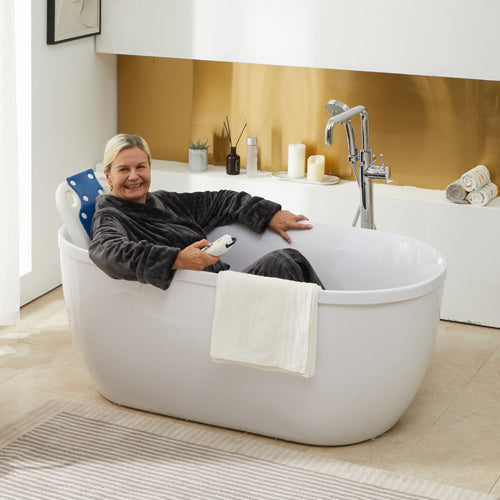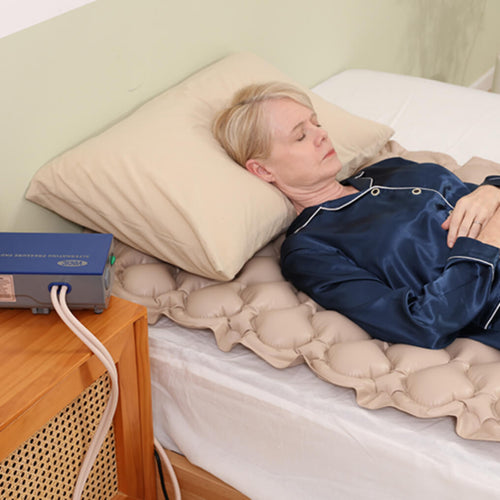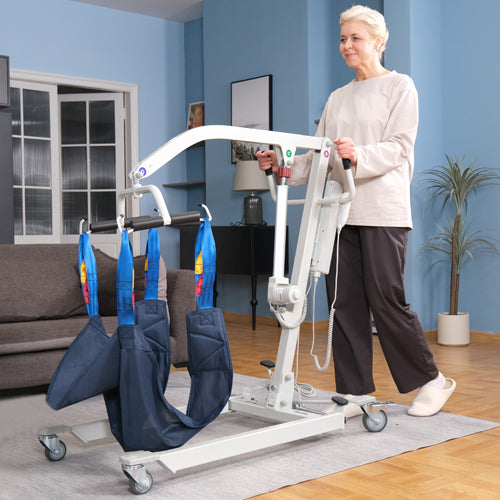Disposable bed pads, also known as Chux pads and bed pads, are absorbent pads designed specifically for adults, commonly used in incontinence care and post-surgical recovery. These pads are typically used to protect sheets, mattresses, and furniture from urine leaks. Disposable bed pads are composed of multiple layers, featuring high absorbency and leak-proof backing to ensure comfort and dryness.
They are most commonly used by individuals who need long-term bed rest and are widely utilized in hospitals and nursing home facilities. For those who cannot get out of bed or experience nighttime urine leakage, disposable bed pads serve as the last line of defense.
What are the Differences between Reusable Bed Pads and Disposable Bed Pads?
Reusable Bed Pads

Reusable bed pads are typically made from fabric and vinyl, with an inner layer of cotton to absorb liquids. These pads can absorb more liquid than disposable bed pads and can be washed in a washing machine. The vinyl backing at the bottom prevents liquid from leaking through. They are durable, reusable, and can be cleaned after getting soiled. If you’re looking for an eco-friendly option and don’t mind the effort of changing and washing the pads, this is a great choice.
Disposable Bed Pads

Its function is similar to that of regular incontinence pads, but they cover a larger surface area. Available in various sizes, they can protect a range of furniture and beds. Liquids are absorbed into the pad's core and turned into gel. Disposable bed pads keep incontinence users dry but need to be changed more frequently than reusable pads.
Disposable pads are also popular among pet owners, and they are used as puppy training pads or for elderly dogs with incontinence. They have many other uses, such as in cribs for babies and for children who wet the bed.
Who Needs Disposable Bed Pads?
Disposable bed pads, or disposable chuck pads, are suitable for many users who need extra protection and comfort, including:
H3: Incontinence Patients
- Elderly: Incontinence is common among elderly individuals due to muscle relaxation or illness, requiring frequent bed pad changes to maintain cleanliness and dryness.
- Patients: Post-surgical or long-term bedridden patients, especially those who cannot use the restroom independently, need these adult bed pads to prevent bed wetting.
Children and Babies
- Bedwetting Children: For children who wet the bed at night, disposable bed pads protect the mattress and sheets, reducing the need for nighttime cleanups.
Family Caregivers
Home Care: Family caregivers use disposable bed pads when caring for incontinence patients, reducing their burden and providing a clean, sanitary caregiving environment.
Pet Owners
- Pet Training: Disposable bed pads are often used as puppy training pads to help train puppies to urinate in designated areas.
- Elderly Pets: Older pets with incontinence issues can also use disposable bed pads to keep their environment clean.
Travelers and Outdoor Enthusiasts
- Travel and Camping: During travel or camping, disposable bed pads offer temporary protection to prevent tents or beds from getting wet.
Temporary Use Situations
- Hospitals and Clinics: In medical settings, disposable bed pads for adults are used post-surgery or in other situations where frequent bed linen changes are necessary to maintain hygiene.
- Emergency Situations: In natural disasters or other emergencies, these bed pads can be used in temporary shelters to provide a clean and dry resting environment.
How to Choose the Best Disposable Bed Pads for Adults?
When looking for disposable incontinence bed pads, you might focus on the following features:
- Variety of Sizes: Ensure that the bed pads you choose are large enough to cover the surface where they will be placed. Proper sizing is crucial for effective protection.
- Absorbency: Disposable bed pads come in different absorbency levels, ranging from light to ultra-absorbent. Choose one that suits the user's needs to ensure they stay dry and comfortable.
- Soft Material: Opt for bed pads with a soft, comfortable surface layer and waterproof backing. Breathable materials are important as they help reduce skin irritation, while the waterproof backing prevents liquids from seeping through to the mattress.
- Odor Control: Odor control is essential when dealing with incontinence. Look for disposable bed pads that offer effective odor management to maintain a fresh and pleasant environment.
- Breathability: Breathable bed pads are crucial for reducing skin problems, particularly for elderly users who are bedridden. The breathability of incontinence products should be a key consideration, especially for those with sensitive skin, as skin breakdown can lead to persistent and painful conditions.
- Ease of Movement: Some underpads for incontinence can be difficult to reposition once placed, potentially leading to wrinkles and sliding that cause discomfort. Choose disposable chuck pads that are easy to move and adjust as needed.
Where to Buy Bed Pads for Adults?
VOCIC offers high-quality AT09 Disposable Bed Pads for adults. This product is designed to provide comfort, protection, and superior absorbency, ensuring a dry and odor-free experience.
AT09 Disposable Incontinent Underpads

- 5-layer Structure: The first layer is non-woven fabric, soft and comfortable, harmless to the skin; layers 2 to 4 use materials like polymers and fluff pulp for strong absorbency; the bottom of the adult bed pad is made of polyurethane or plastic layer to seal in liquids.
- Odor and Waterproof
- Super Absorbent: Holds up to 500 ml
- Size: 36’’×30’’, lager coverage for incontinent protection









